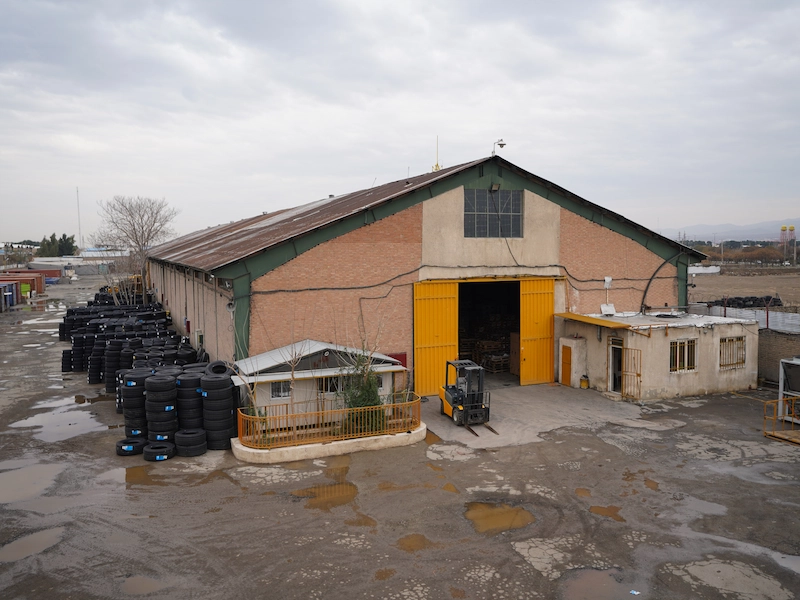Optimization of warehouse stock is the concern of every warehouse. Businesses want to achieve the perfect balance between understocking and overselling in order to maximize their profits without negatively impacting customer satisfaction.
In this article, we will discuss the importance and benefits of warehouse inventory management and some techniques to help increase productivity.
Why is inventory management important?
Warehouse inventory management allows you to maximize productivity, lower costs and increase accuracy by using the most efficient inventory method. When inventory is not managed properly, it can lead to the following: stock shortages, overstocking, theft, etc. A managed warehouse inventory system can help prevent these problems and its benefits, which are We have listed below.
Benefits of inventory management
1. Increase sales
Proper inventory management can increase sales by providing accurate information. For example, if the recorded inventory is less than the actual stock, the system will reduce an order, resulting in a lost sale. Conversely, if the recorded inventory exceeds the actual stock, the system will accept the order even if the stock is insufficient. Therefore, having accurate inventory that matches your records allows you to move orders correctly and increase sales.
2. Shorter time
Warehouses can reduce lead times by using various inventory management strategies, such as incorporating appropriate reordering and sales forecasting programs.
3. Improving the transparency of information
Good inventory management helps you stand out throughout your supply chain. It helps you to know when the products are received, picked, packed, shipped, etc. In addition, it enables you to accurately determine the amount of your warehouse.
4. Increasing customer loyalty
Applying inventory management methods can increase customer loyalty by accurately and efficiently fulfilling customer orders. This method can lead to more customer satisfaction and repeat sales.
5. Reduction in stock sales
Inventory management means finding a balance between underselling and overselling. If your stock is too low, you may experience a stock out. This can be avoided by implementing inventory management techniques such as tracking low inventory levels through regular audits and restocking. In addition, using predictive analytics can prepare you to estimate the best repayment rate based on past months.
6. Lower costs
Managed inventory can help a warehouse reduce purchasing or processing inventory. Actions such as getting rid of obsolete inventory, automatic reordering, and preventing excess safety can help reduce these costs.
Warehouse inventory management methods to help increase productivity
1. ABC analysis
ABC analysis is an inventory classification technique used in warehouse management. This method is similar to the Pareto Principle, which states that 80% of your consumables come from 20% of your products. This method includes the classification of inventory into three categories:
Group A: Best-selling items that account for 80% of revenue or 20% of total inventory.
Group B: Interclass items that account for 15% of revenue or 30% of total inventory.
Group C: Low consumption items that make up 5% of revenue or 50% of total inventory.
Advantages of the ABC approach
When the stocks are sorted according to demand, you can allocate the right time and have better control over the important ones.
Categorizing cases when using ABC analysis helps you make more effective forecasts.
Strategic pricing can be set for products based on market demand.
Disadvantages of the ABC approach
The ABC system conflicts with traditional costing systems because it does not meet the requirements of generally accepted accounting principles (GAAP).
Categorizing inventory based on sales can lead to missing trends that have just started.
An ABC analysis system requires more resources than traditional costing techniques because a consistent process of data collection and measurement is required.
2. On time
JIT inventory system is a warehouse inventory technique in which items are produced or procured just before they are needed. Warehouses use this method to increase efficiency and reduce inventory holding costs and reduce wastage. JIT can be used for fast-paced businesses that are equipped to handle short production cycles.
Advantages of JIT
Due to faster inventory turnover, warehouses require less storage space.
JIT is suitable for small companies because it requires less capital investment and can help them maintain a healthy cash flow.
Keeping a low level of inventory prevents products from becoming obsolete. This method helps companies save on inventory costs.
Disadvantages of JIT
JIT relies on the continuous flow of goods at specified time intervals.
JIT is highly dependent on suppliers, which means that if they don’t deliver on time, it can affect subsequent processes.
Because minimum stock levels are maintained, the JIT system has little room for error.
3. Economic order quantity
Economic order quantity is the ideal number of units that the company should hold to minimize inventory costs. If achieved, a warehouse can reduce inventory costs such as holding, shortages, and ordering costs.
Advantages of EOQ
The EOQ model is business-specific because it is cost-effective
It determines the maximum number of units per order for trading, the reorder time, and the number of orders.
Storage and holding costs are lower for businesses because this model helps you determine the most economically profitable quantity in an order.
Businesses’ negotiating power increases because buying a fixed amount each time can qualify them for a discount.
Disadvantages of EOQ
The EOQ model does not take into account seasonal or economic fluctuations because it assumes that there are none.
The model also assumes that consumer demand is constant throughout the year, which can lead to ordering excess inventory.
Businesses feel the need for continuous monitoring because they need to order as soon as the minimum reorder level is reached.
4. Material requirement planning method (MRP)
The MRP method is an inventory management model that estimates delivery after considering sales forecasts, raw material quantities, and schedules. This method works best for companies with mass production and long assembly lines, and will provide answers to the following questions: What is needed? How much is needed? And when is it needed? The MRP method consists of three steps: cycle counting, identifying items to order, and then planning to purchase.
Benefits of material requirements planning
Due to the bulk order, the production cost of each unit is reduced.
When using the MRP method, the amount of inventory capital is reduced significantly.
MRP enhances tracking and forecasting because detailed customer and supplier trend data is widely available.
Disadvantages of material requirement planning
The time and cost of implementing the MRP system is generally very long.
Accurate output is provided only if error-free input is received.
It does not take into account delivery problems and material shortages, which make it a potential risk to slow down production.
5. Drop Shipping
Drop-Shipping is an inventory management model that allows a warehouse to sell and ship products that it does not own and does not have in stock. This method is mostly used by e-commerce companies to keep their budget. The process starts with receiving the order and sending it to the supplier, and then the supplier fulfills your order.
Advantages of Drop-Shipping
Startup costs are low, as there is no equity investment.
Since capital is not tied up in inventory, it makes it easy to sell long items.
Disadvantages of Drop-Shipping
Warehouse does not control anything other than your price and the products offered.
This method does not guarantee profit because there are many variable costs involved.
Many warehouses have faced quality control and order fulfillment problems in customer service.
Summary
Proper inventory management can have a positive impact on your business. Some of its benefits are reduced costs, increased sales, and greater customer satisfaction. We hope that the inventory optimization techniques we have presented can help you achieve these results and lead to an efficient and profitable business.
Source: https://www.logisticsbrief.com/?query=warehouse%20article&open-article-id=12629439&article-title=warehouse-inventory-management-techniques-to-increase-productivity&blog-domain=cyzerg.com&blog-title=cyzerg







